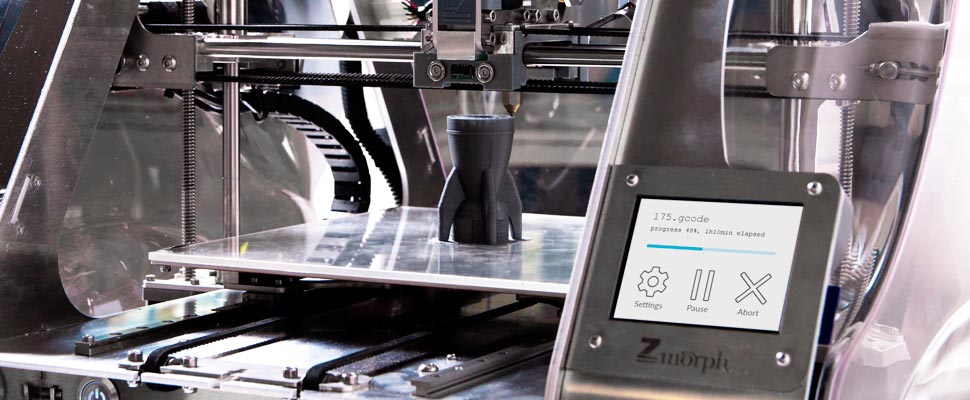The pros and cons of 3D printing
3D printing is leading to a new way of production, with less waste, lower prices and shorter times

3D printing offers different advantages for its users. / Photo: Unsplash
LatinamericanPost| Juan Manuel Bacallado
Escucha este artículo
Leer en español: Los pros y contras de la impresión 3D
3D printing started in 1983 thanks to Charles W. Hull, the physical engineer who designed and made the first 3D print. However, it would take up to 30 years for this invention to be widely available. For this reason, today you can buy a 3D printer from pages like Amazon and use them at home, with an investment that starts at $ 200 for a basic copy, a fairly cheap price compared to 2002, when a 3D printer was around $ 30,000 according to the BBC.
How does a 3D printer work? In simple terms, 3D printing consists of producing solid three-dimensional objects from a digital pattern. Although the most used material is usually plastic derivatives, there are currently various 3D printers capable of working with more than 250 different materials, such as metal, ceramics, glass, rubbers, among others, according to information from the Association of Manufacturers and Distributors (AECOC).
Personalization
Among the main advantages offered by 3D printers is personalization. In fact, this has influenced the textile industry above all, in which general molds and patterns would no longer be necessary to make clothes, only specialized software and a printer with the capacity to handle the necessary materials, according to Sculpteo review. Other brands like Adidas have also taken advantage of 3D printing to make sports shoe soles.
La fabricación aditiva se establece en los diseños de moda a través de un filamento híbrido para la impresión 3D de tejidos https://t.co/ffP63o6GnV#España #Actualidad #Impresora3D #Tecnologia #Impresion3D #Lion2 pic.twitter.com/6fwGs5OB78
— LEON3D (@LEON3_D) April 24, 2018
Time and economy
A clear advantage of 3D printing is the low production prices on many objects as well as shorter manufacturing time in some cases since the same printer can be used to produce various objects of different materials, reducing machinery costs. In addition, whether it is a simple or sophisticated design, the manufacturing price will be the same, according to Euroresidents. On the other hand, AECOC points out that the speed of 3D printing continues to increase since this was previously a disadvantage. However 3D printers have been manufactured by MIT that are up to 100 times faster, proving to be able to print for example a lens mount in 3.6 minutes.
It may interest you: Bioprinting: living cells in a 3D printer
A recent example of low manufacturing costs came with the Covid-19 pandemic, in which an Italian hospital was running out of valves for artificial respirators and had no time to stock up, so a group of “makers” designed and then printed these pieces, each with a cost of 1 euro, when the original piece is priced at 10,000 euros, according to Business Insider.
La impresión 3D ayuda a imprimir reemplazos de válvulas para respiraderos en Italia. Más info en https://t.co/wVgibDQZmj #3dprinting pic.twitter.com/qupIiIuKIk
— 3D Printing & Design (@3DPrinting_Des) March 16, 2020
Sustainability
Precision is a clear benefit of 3D printing, since, unlike industrial production, it is not necessary to cut large pieces of materials, remove layers, and more, since the 3D printer designs from scratch without generating waste and saving raw materials, according to Euroresidents.
Also Read: 3D-printed coral could help endangered reefs
However, there are also disadvantages that have not yet been corrected in the 3D printing sector, for example:
Counterfeiting and dangerous production
Being able to easily access a 3D printer will allow people to copy designs and make replicas without permission and without caring about copyrights, encouraging piracy. Also, not everyone will produce needed items as it is also possible to print things like fully functional weapons as long as the pattern is obtained or designed. In 2013 this was already done in the United States, with a printer that cost less than $ 1,000 and $ 25 in materials to make a plastic weapon – although they can be made of metal – capable of firing 9 bullets, according to CNN.
Armas hechas con impresoras 3D en Estados Unidos: Mortales y sin forma de rastrearlas. | Vía: @NewsweekEspanol. https://t.co/TkQWDoz69f pic.twitter.com/gXFKmynhy0
— Animal Político (@Pajaropolitico) August 1, 2018
Another disadvantage that 3D printing presents, for now, is mass manufacturing. Although printing small parts on a large scale is already feasible, generating large volumes of production is more complicated and can still be more expensive. However, with the evolution of 3D printers and their materials, companies such as General Electric, Ford, Boening, Nike among many others are experimenting with the mass production of 3D printers, according to Frax3D.




